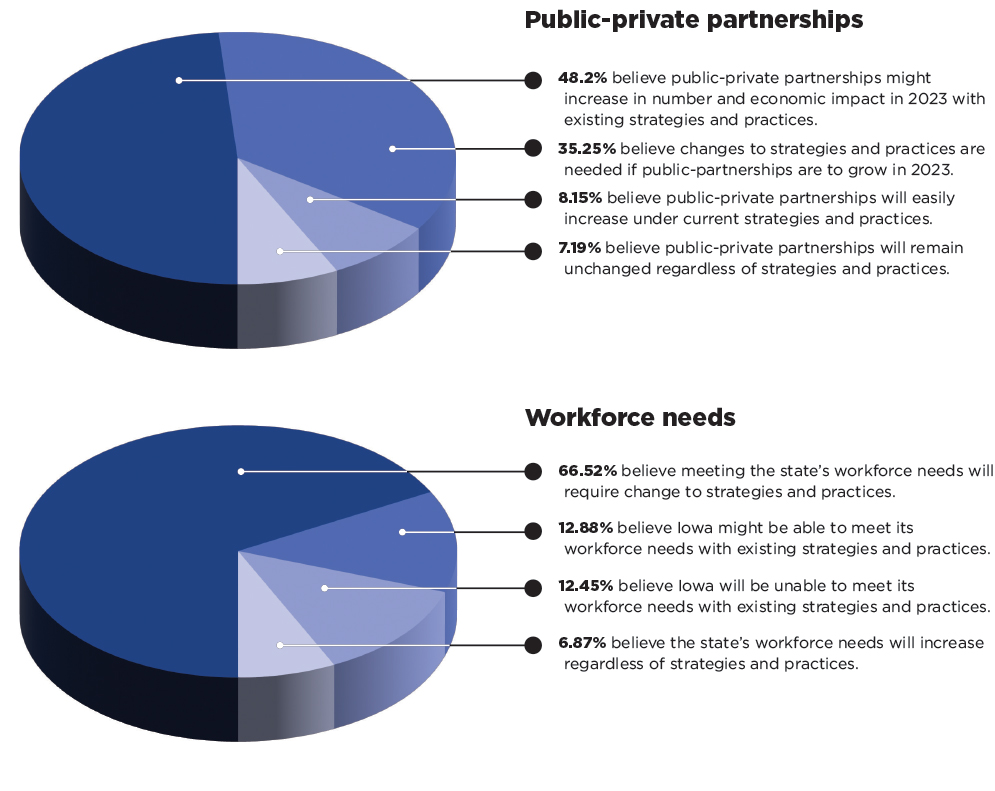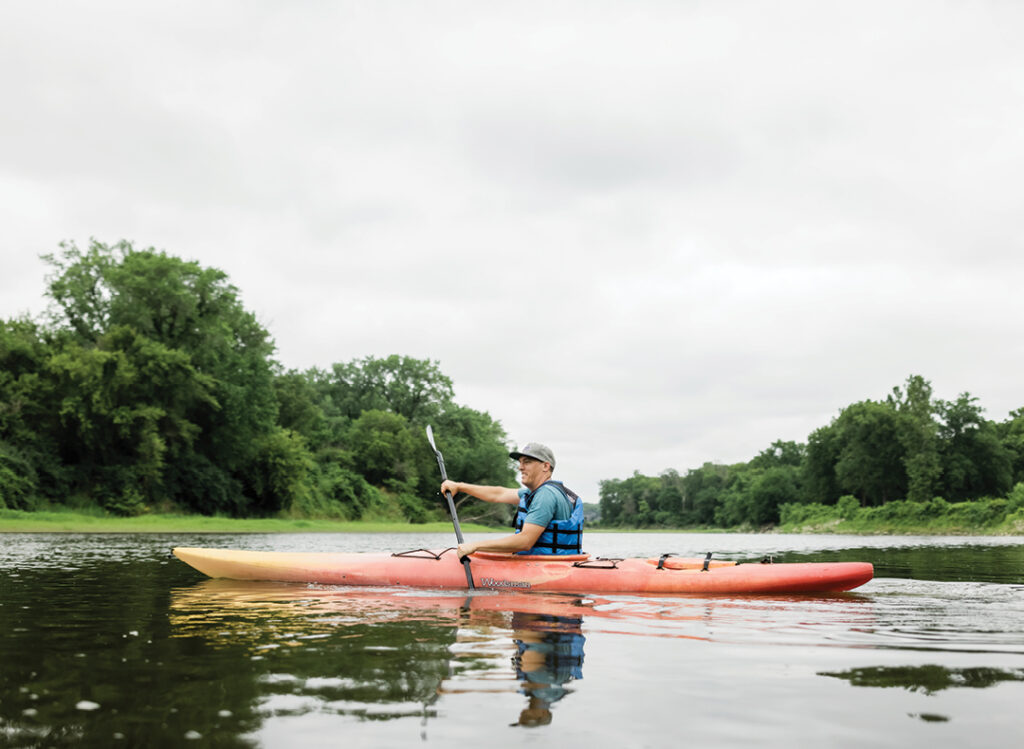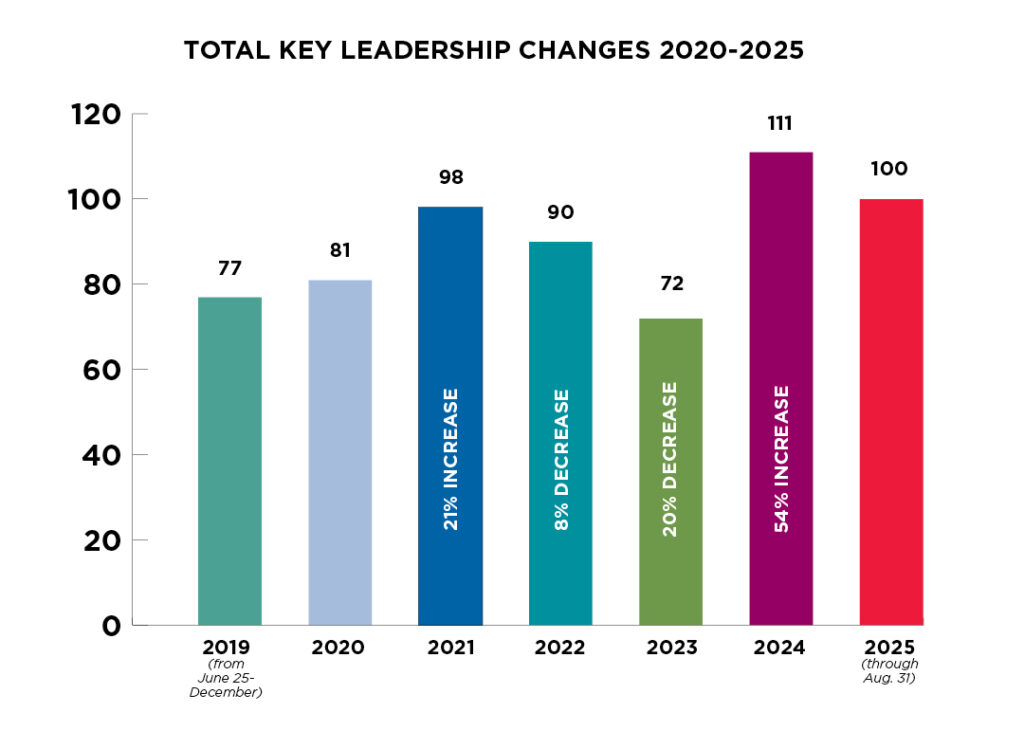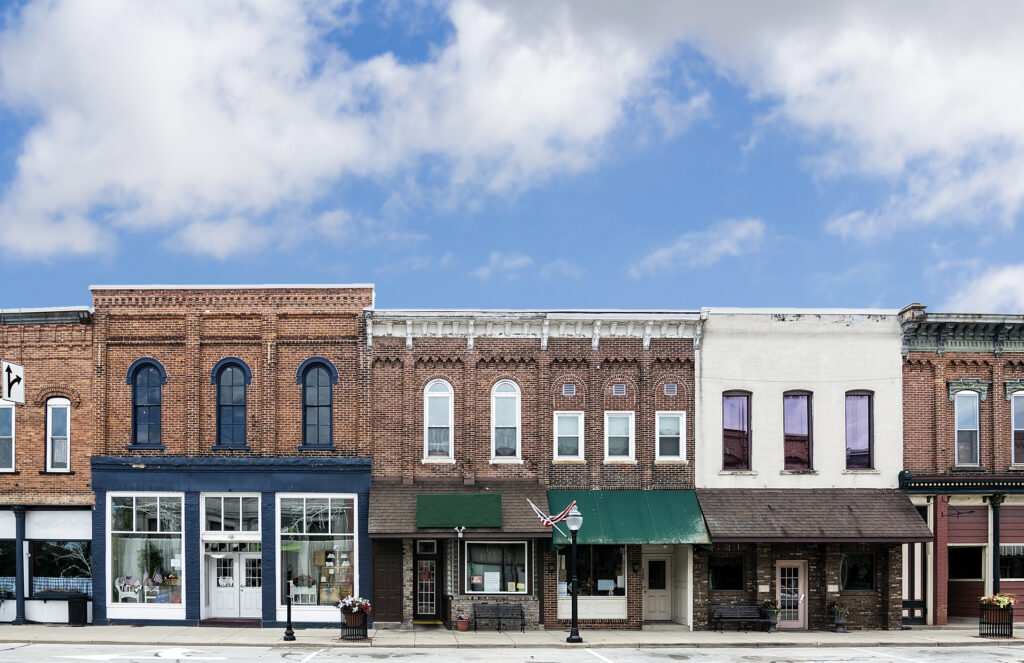Laying groundwork for greater collaboration
Envision Iowa survey results identify opportunities to create thriving communities

MICHAEL CRUMB Nov 22, 2022 | 9:48 pm
9 min read time
2,217 wordsBusiness Record Insider, Economic DevelopmentRail Explorers, a company that takes customers on a 12-mile round- trip ride from the Boone and Scenic Valley Railroad to the Bass Creek High Trestle and the Des Moines River Bridge to the west and back on rail bikes, has drawn almost 10,000 customers since it opened in July.
“This is probably the biggest thing that’s happened in Boone in a long time,” said Ian McCaskey, assistant division manager overseeing Rail Explorers in Boone.
And McCaskey would know. The 26-year-old is a lifelong Boone resident.
Customers have come from several states and from as far away as Canada, Mexico and Spain to ride the rails on the bikes, which carry two to four passengers, McCaskey said.
Rail Explorers came to Boone in a partnership with the Boone and Scenic Valley Railroad, entering into a five-year agreement to run out of the historic Central Iowa rail station in the town of about 12,500 people.
Those partnerships are an important element of Iowa’s economic and workforce development strategies, according to a recent survey done by research consulting firm Baton Global in collaboration with Business Publications Corp., parent company of the Business Record.
Envision Iowa
The Envision Iowa Statewide Leaders Economic Outlook Survey was done as part of BPC’s Envision Iowa initiative, which brings together economic development professionals and business leaders from across Iowa to share ideas and solutions to the challenges the state is facing.
The survey was sent to about 3,500 leaders from business and industry, economic development, chambers of commerce, education, municipalities, and government agencies. Responses represent 77 of Iowa’s 99 counties, with data collected from Aug. 29 through Sept. 12.
Envision Iowa included three virtual think tank sessions followed by a live event in Des Moines in October, where the survey results were released.
The survey of leaders statewide included questions about public-private partnerships, workforce development, population growth, innovation, entrepreneurship, diversity equity and inclusion, and overall quality of life for Iowans.
Generally, those responding were cautiously optimistic that improvement will be seen in Iowa’s workplace environment over the next year, but a large number of respondents indicated they thought the state’s policies and strategies will need to change before improvement is seen.
Public-private partnerships
About 48% of those responding to the survey said public-private partnerships may increase under current strategies. About 35% said strategies and practices will need to change if public-private partnerships are to increase. About 8% or fewer of the other respondents said the partnerships would easily increase, remain unchanged or decrease in the coming year.
Kavilash Chawla, a partner with Baton Global, said there was anecdotal evidence that public-private partnerships and placemaking strategies have been successful, but there is little data to back those findings.
“We had a hard time finding key metrics that were used to measure the breadth and depth of public-private partnerships,” he said. “It is not just an Iowa issue. It was more of a broader national-level issue of just getting good public-private data being very challenging. There is cautious optimism, but when you have a lack of good availability of data, it is hard for policymakers, business owners, community and cultural leaders to be able to assess what has worked elsewhere and why it has worked.”
And that makes it difficult to determine what might work in a specific community, or in Iowa in general, Chawla said.
“So when it comes to leveraging public-private partnerships as a strategy to drive economic growth and to drive a thriving state, the absence of good data that allows us to learn is a bit of a hindrance,” Chawla said. “What it means is we’re making a lot of either experience-based decisions or we’ve got decisions we make and we have to see where they go. But we have a lack of historical data and comparative data to be able to help inform the better decision.”
While the survey didn’t make a specific recommendation for those who engage in public-private partnerships to keep better data, Chawla said “that would be beneficial.”
“Anecdotally we know they have been successful, but better data will allow us to understand what were some of those elements that drove success and what were some of the elements that create barriers to success, and we can increase the probability of success if we understand those,” he said.
There are plenty of examples of public-private partnerships across Iowa.
In Central Iowa, they include the Easter Lake North Shore Recreation Area project and the Sixth Avenue Flats affordable housing project in Des Moines. There are also registered apprenticeships programs that give high school students the opportunity to explore health care careers, among many other initiatives.
In southwest Iowa, the city of Council Bluffs, the Council Bluffs school district, Google, the Iowa West Foundation, the local Chamber of Commerce, MidAmerican Energy and several others organizations partnered to bring community-wide internet to Council Bluffs.
There is also the River’s Edge Development that will include a mix of commercial, retail and residential development.
River’s Edge is expected to generate nearly $304 million in economic activity in the area, generating $19.1 billion in sales activity within the city and county over 32 years, according to the project website.
There are also talks about partnering with Omaha, Neb., to build a multi-modal bridge to extend Omaha’s streetcar route across the Missouri River into Council Bluffs and provide pedestrian access across the river.
Drew Kamp, president and CEO of the Council Bluffs Chamber of Commerce, said public-private partnerships are critical to the economic vitality of a region.
“And it’s just not your public and it’s just not your private, it’s also your nonprofits,” he said. “The public-private partnership, especially with the uncertain times we’ve seen over the past couple of years, I think it’s become even more important.”
Kamp said it’s “quintessential” to be able to bring stakeholders together to address strategies for economic growth.
“It’s super important that everyone’s meeting, everyone’s on the same page and everyone is pulling in the same direction,” he said.
And there is no better time to do public-private partnerships because of the allocation of federal American Rescue Plan Act funds, Kamp said. ARPA provided $350 billion to assist state and local governments in making investments in public infrastructure, offset revenue lost during the pandemic, help hard-hit small businesses and households, and for economic recovery.
“We have until 2024 to identify those and then 2026 to spend them, so having this amount of public money in the system is such a unique opportunity and then you pair that with the infrastructure bill, there are opportunities that I haven’t seen in my lifetime,” Kamp said. “There’s just a lot of excitement about the opportunity that it provides.”
Public funding
Mary-Joy Lu, owner and CEO of Rail Explorers, said the business has applied for Destination Iowa Funds, and hopes to be approved for a grant to help build off the partnership it has with the Scenic Valley Railroad.
Rail Explorers has a five-year agreement with the railroad, which receives a piece of the revenue Rail Explorers generates.
Besides its operation in Boone, Rail Explorers also operates in Cooperstown, N.Y., Rhode Island, the Catskills, N.Y., and in Las Vegas.
Lu said Rail Explorers has become a destination for the communities where it operates, generating business for local hotels, bed-and-breakfasts, restaurants, retail and other attractions.
“We find that our economic impact is seven to 10 times the impact per dollar spent [at the attraction],” she said. “Plus, our payroll next year, when we have a full year [in Boone], is going to be close to a half million dollars, and that’s employing as many full-time people as we can get.”
Lu said attractions like Rail Explorers can help boost local economies and help create jobs that keep people in a community.
“If we can help bring more businesses back to life, it helps the business community, it helps show that the community can be sustainable and they don’t need to leave the region,” Lu said. “Keeping people local for jobs is incredible because then their families will stay.”
Survey takeaways on workforce
Another topic contained in the Baton Global survey was whether Iowa will be able to meet its workforce needs in 2023.
According to the results, more than 66.5% of those responding indicated that changes to current strategies and practices will be needed if the state’s workforce demands are to be met.
An almost equal number of people responding said Iowa might be able to meet its workforce needs or will be unable to meet its needs in 2023.
Chawla said the large number of respondents indicating changes are needed is a recognition that the state needs to use different tactics and strategies to accelerate its ability to meet the state’s workforce needs.
“I know the state and individual businesses are trying to get people back into the workforce, and get them actively participating in the workforce,” he said. “I know there are strategies to increase our base population and recruit folks from other parts of the world and other parts of the U.S. into Iowa to increase that.”
Chawla said while groups are working to increase the state’s workforce, the survey shows more needs to be done.
“Our needs are outpacing the supply despite all the best efforts, so when I interpret that data, collectively, we need a longer strategy that very deliberately brings the different stakeholders together to say, based on our economic growth, based on the industries we continue to focus on that are going to continue to drive our economy forward, how best do we enable them to grow given these constraints?” he said.
Workforce strategies should “cascade down from the statewide economic growth strategy,” he said.
“Growing the workforce effectively, it’s an input into economic growth,’’ Chawla said. “How do we build out that workforce strategy to ensure we have the right workforce to deliver and drive those pillars of the economy we are focusing on? Workforce strategy would be a sub-strategy of a broader statewide economic growth strategy.”
Diversity, equity and inclusion
The Baton Global survey showed that participants were pretty evenly split in their optimism for the future of diversity, equity and inclusion (DEI) efforts in Iowa.
According to the results, 37.4% responded that change in strategies and practices will be needed if Iowa is to improve its DEI performance, while about 34% indicated that there might be progress under current strategies and practices.
Only 13.8% responded that DEI will improve under current strategies and practices, with nearly 12.5% saying the state’s DEI performance will remain unchanged. Just 2.23% said things will decline in 2023 regardless of DEI strategies and practices.
Chawla said people’s perceptions may be influenced by where they live, with rural respondents being less optimistic compared to their urban counterparts.
“I wouldn’t generalize that we’re making progress,” he said. “I would say that in certain demographics there was a more positive outlook that current strategies will lead to progress.”
Moving forward
The survey did not delve into strategies and tactics that should be applied, but instead is intended to encourage stakeholders to build off the data it contains to develop more effective solutions to the challenges Iowa is facing, Chawla said.
He also encourages a shift from using historical data to creating a more forward-looking approach to decision-making.
“There was very little predictive analytic forward-looking modeling that was being done,” he said. “I think history is necessary to understand and learn from, but we need to be able to deploy more forward-looking analytics and points of view, and we have the technologies to enable us to do so.”
Chawla said he hopes the survey can be used to bring people together to discuss its findings – what they like about them and what they don’t like – and use them to influence change.
“So No. 1, to provide the stakeholders with a shared pool of forward- looking data to say, ‘what’s our point of view on things and how can we work together to ensure that there is a thriving future, and to create a shared understanding to bring them together for productive discussions,” he said.
The second hope is that the information from the survey continues to evolve and becomes a deliberate process involved in decisions about funding, business owner decisions, and public policy decisions, Chawla said.
Whether it’s addressing public-private partnerships, workforce issues, DEI, innovation or population growth, the key to successful change is facilitating open dialogue between stakeholders, said Kamp, the Council Bluffs Chamber executive.
“It just goes back to those conversations and interactions between those key stakeholders,” he said. “It’s being very deliberate about communications and meetings that can make it so much easier. Not only will you have better relationships with your key stakeholders, public, private and nonprofit, but you can move the needle on some of those big things and move the needle when others may not be able to.”











